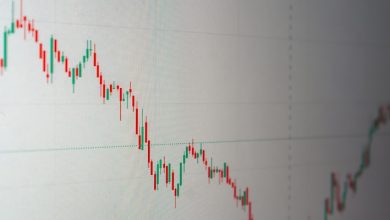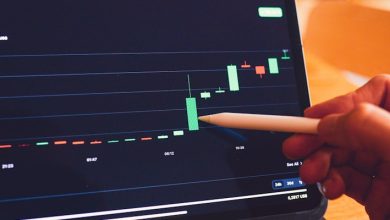Trading on Margin in Crypto: A Double-Edged Sword

- Understanding the concept of trading on margin
- The risks and benefits of leveraging in cryptocurrency trading
- How to effectively manage margin trading in the volatile crypto market
- Margin trading strategies for maximizing profits and minimizing losses
- Regulatory considerations and potential pitfalls of trading on margin in crypto
- Examples of successful and disastrous margin trading scenarios in the cryptocurrency market
Understanding the concept of trading on margin
Understanding the concept of trading on margin is essential for anyone looking to engage in cryptocurrency trading. Margin trading allows traders to borrow funds from a broker or exchange to increase their buying power and potentially amplify their profits. However, it also comes with significant risks, as losses can be magnified in the same way that profits can.
When trading on margin, traders are required to maintain a minimum balance in their account, known as the margin requirement. If the value of their investment falls below this threshold, they may be subject to a margin call, requiring them to deposit more funds to cover their losses. Failure to do so can result in the broker liquidating their position to recoup the borrowed funds.
It’s important for traders to carefully consider the risks involved in margin trading before getting started. While it can offer the potential for higher returns, it also carries a higher level of risk than traditional trading. Traders should be prepared to handle the ups and downs of the market and have a solid risk management strategy in place to protect their investments.
The risks and benefits of leveraging in cryptocurrency trading
When considering leveraging in cryptocurrency trading, it is important to weigh the risks and benefits associated with this strategy. While leveraging can potentially amplify profits, it also comes with significant risks that traders should be aware of.
One of the main benefits of leveraging is the ability to increase potential returns on investment without requiring traders to invest a large amount of capital upfront. This can be especially appealing in the volatile cryptocurrency market where prices can fluctuate rapidly.
However, it is crucial to understand that leveraging also magnifies losses in the same way it magnifies gains. If the market moves against a leveraged position, traders can end up losing more than their initial investment. This can lead to significant financial losses and even result in margin calls where traders are required to deposit additional funds to cover their losses.
Furthermore, leveraging is not suitable for all traders, especially those who are new to cryptocurrency trading or have a low risk tolerance. It requires a deep understanding of market dynamics and the ability to manage risk effectively. Traders should also be prepared for the possibility of losing their entire investment when leveraging.
In conclusion, while leveraging can offer the potential for higher returns, it also carries substantial risks that should not be overlooked. Traders should carefully consider their risk tolerance and financial situation before deciding to leverage in cryptocurrency trading.
How to effectively manage margin trading in the volatile crypto market
Effectively managing margin trading in the volatile crypto market requires a strategic approach to minimize risks and maximize potential gains. Here are some tips to help you navigate this double-edged sword:
- Set clear risk management rules and stick to them religiously. Establish stop-loss orders to limit potential losses and avoid emotional decision-making.
- Stay informed about market trends and news that could impact cryptocurrency prices. Being aware of potential catalysts can help you make more informed trading decisions.
- Diversify your portfolio to spread out risk. Avoid putting all your margin trading funds into a single cryptocurrency to minimize the impact of price fluctuations.
- Use leverage cautiously and avoid overleveraging your positions. While leverage can amplify gains, it can also lead to significant losses if the market moves against you.
- Regularly review your margin trading strategy and adjust it as needed based on market conditions. Flexibility and adaptability are key to success in the dynamic crypto market.
By following these guidelines and staying disciplined in your approach to margin trading, you can increase your chances of success while mitigating the risks associated with this high-stakes form of trading in the crypto market.
Margin trading strategies for maximizing profits and minimizing losses
When engaging in margin trading, it is crucial to implement effective strategies that can help you maximize profits and minimize losses. Here are some key strategies to consider:
- Diversification: Spread your investments across different cryptocurrencies to reduce risk.
- Stop-loss orders: Set up stop-loss orders to automatically sell your assets if they reach a certain price, helping to limit potential losses.
- Use leverage wisely: While leverage can amplify your gains, it can also magnify your losses. Be cautious and use leverage judiciously.
- Stay informed: Keep abreast of market trends and news that may impact the value of your investments.
- Regularly review your positions: Monitor your trades regularly and be prepared to adjust your strategy if market conditions change.
By following these strategies, you can navigate the complexities of margin trading in the crypto market more effectively, increasing your chances of success while mitigating potential risks.
Regulatory considerations and potential pitfalls of trading on margin in crypto
When considering trading on margin in the crypto market, it is crucial to take into account the regulatory considerations and potential pitfalls that come with this practice. Due to the decentralized and largely unregulated nature of the crypto space, there is a lack of oversight compared to traditional financial markets. This can expose traders to higher levels of risk, as there may be limited protections in place to safeguard their investments.
One of the main regulatory considerations when trading on margin in crypto is the potential for increased volatility. Cryptocurrencies are known for their price fluctuations, which can be exacerbated when leverage is involved. This means that traders using margin may be more susceptible to significant losses if the market moves against them. It is important to carefully assess the risk factors and set stop-loss orders to mitigate potential downside.
Additionally, there is the risk of margin calls, where traders are required to deposit additional funds to cover their losses or risk having their positions liquidated. This can happen suddenly and without warning, especially in highly volatile markets. Traders should be prepared for the possibility of margin calls and have a solid risk management strategy in place to avoid being caught off guard.
Examples of successful and disastrous margin trading scenarios in the cryptocurrency market
Margin trading in the cryptocurrency market can result in both successful and disastrous outcomes, depending on various factors such as market conditions, risk management, and trading strategies. Here are a few examples of margin trading scenarios that showcase the potential risks and rewards:
- Successful Scenario: In a bullish market, a trader decides to open a leveraged position on Bitcoin when the price is on an upward trend. By using margin trading, they are able to amplify their gains significantly as the price continues to rise. With proper risk management and timely decision-making, the trader successfully closes their position at the peak, making a substantial profit.
- Disastrous Scenario: On the other hand, in a volatile market, a trader makes the mistake of taking on too much leverage without implementing proper risk management strategies. As the market experiences a sudden downturn, the trader’s leveraged position gets liquidated, resulting in a significant loss of funds. This situation highlights the dangers of margin trading without a clear understanding of the risks involved.
These examples emphasize the importance of conducting thorough research, developing a solid trading plan, and exercising caution when engaging in margin trading in the cryptocurrency market. While it can offer the potential for higher returns, it also carries a high level of risk that should not be underestimated.



